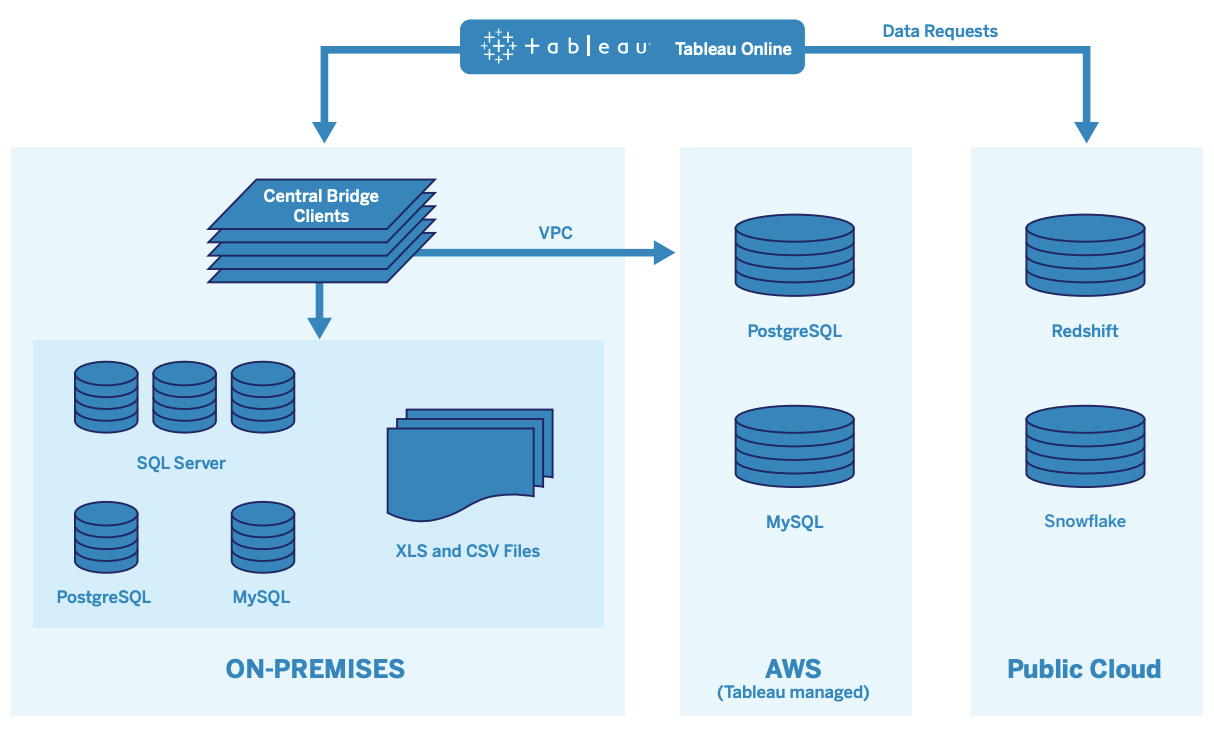Tableau Platform Architecture
This content is part of Tableau Blueprint—a maturity framework allowing you to zoom in and improve how your organization uses data to drive impact. To begin your journey, take our assessment(Link opens in a new window).
Tableau Server
Tableau Server provides a full modern analytics platform for your users. Tableau’s architecture is flexible, allowing you to run the platform just about anywhere. You can install Tableau Server on-premises, in your private cloud or data center, on Amazon EC2, Google Cloud Platform, MS Azure, or Alibaba Cloud. Tableau Server can also run on virtualization platforms.
Multiple server processes work together to provide services in various tiers.To learn how the processes work together, see Tableau Server Processes on Tableau Public. Because Tableau Server integrates with a number of components in your IT infrastructure, it's important to understand how Tableau Server integrates with your IT infrastructure. For more information on processes, see Tableau Server Processes (Windows | Linux). To learn more about Tableau Server processes as deployed in the reference architecture for the minimal enterprise-appropriate Tableau Server deployment, visit Part 2 of the Tableau Server Deployment Guide: Part 2 - Understanding the Tableau Server Deployment Reference Architecture.
Tableau Cloud
Tableau Cloud is a software-as-a-service (SaaS) deployment built to scale to serve thousands of sites with thousands of geographically distributed users within a multi-tenant (shared compute) environment. Tableau Cloud takes advantage of high availability features available in the product and cloud architecture best practices to deliver a reliable experience. Tableau Cloud supports a hybrid data architecture with a mix of networks, including on-premises, private cloud, and public cloud. The following diagram is a high-level illustration of Tableau’s internal deployment of Tableau Cloud:

Tableau manages many different data sources, including SQL Server, PostgreSQL, MySQL, Redshift, Snowflake, Google Big Query, and flat files across various networks. Public Cloud data connections are generally made directly. For private connections, a pool of Tableau Bridge services facilitates the live on-premises or VPC database query capabilities, and scheduled extract refreshes.
For more information, see:
